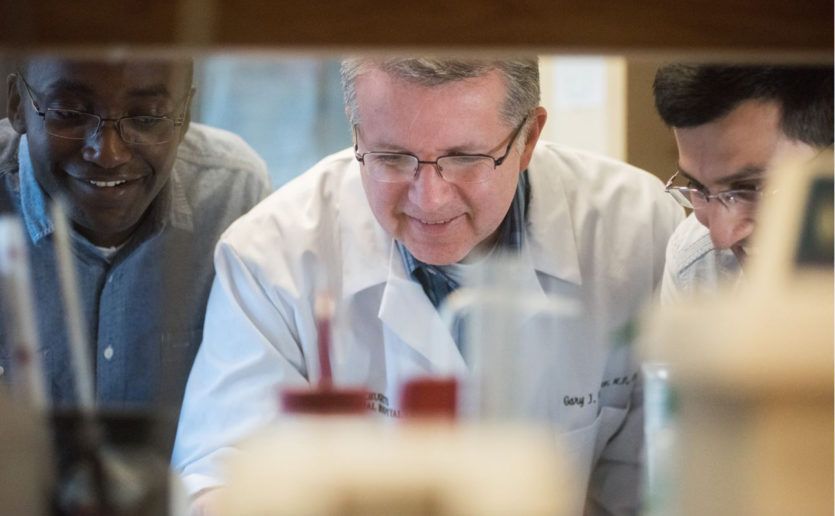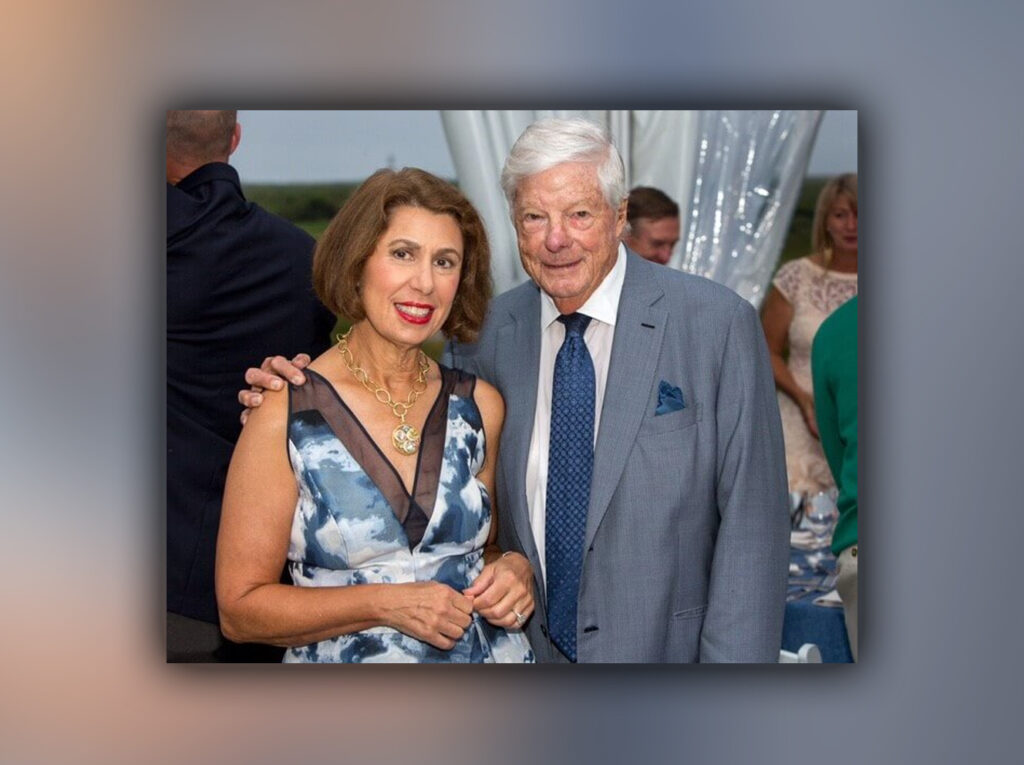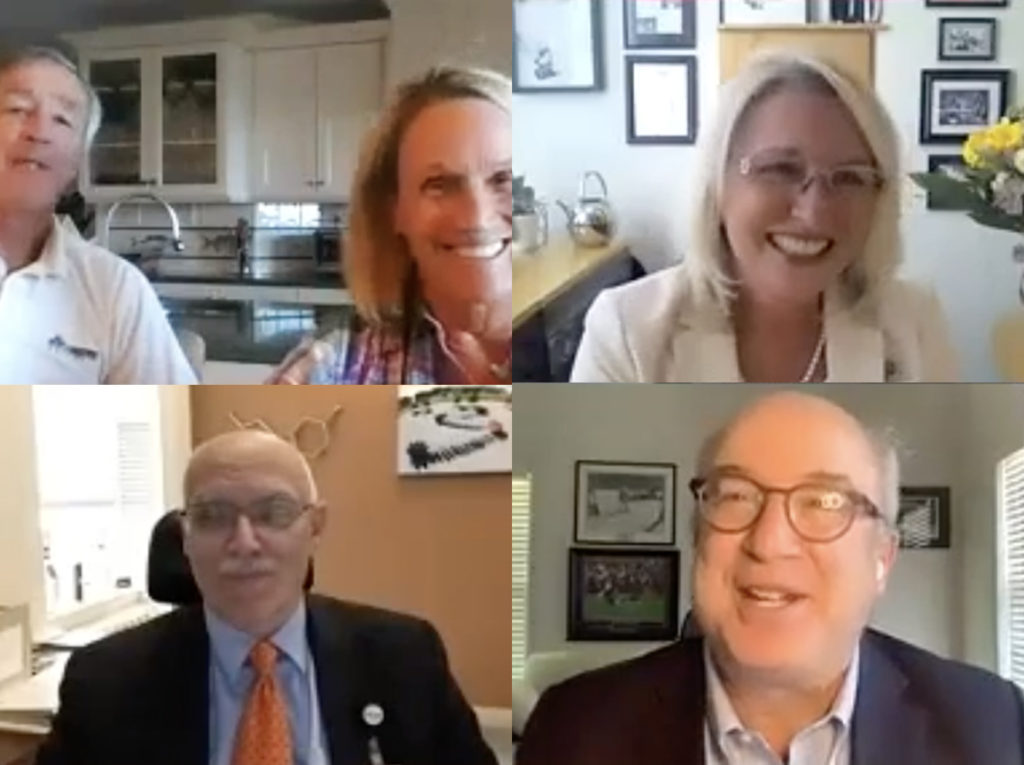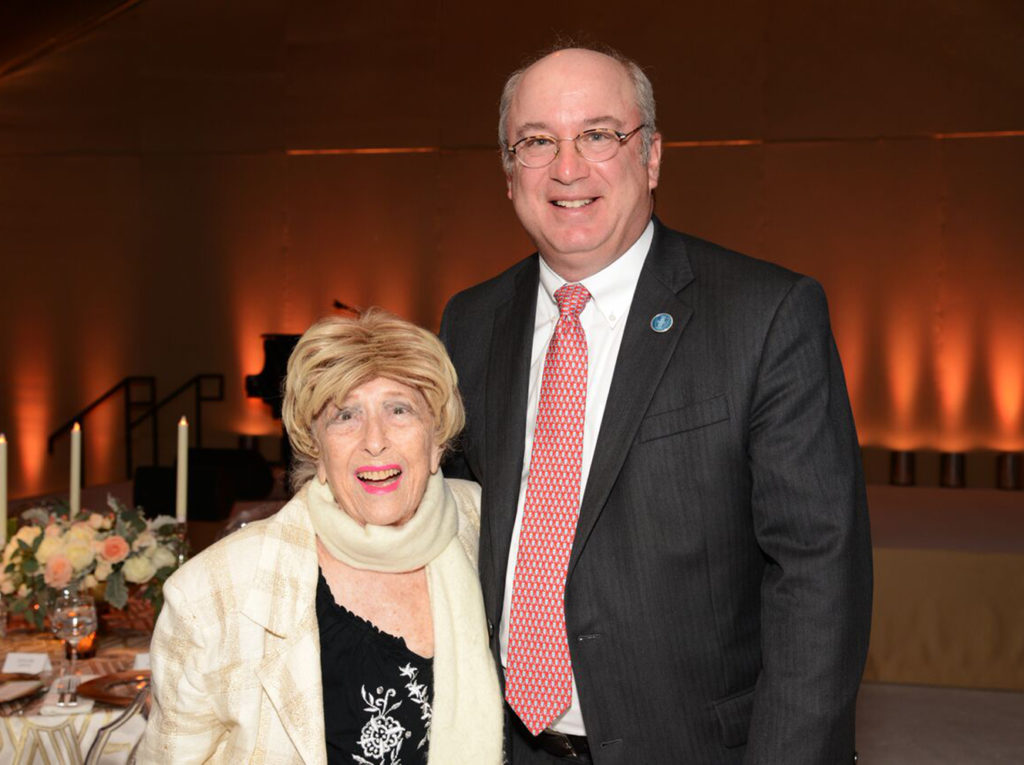What sort of difference is the MGH Research Scholars program making?
Imagine swallowing a small capsule that travels down your gastrointestinal (GI) tract, capturing multiple microscopic images along the way in order to detect Barrett’s esophagus, a precursor to esophageal cancer.

While this device may sound like something from the future, it in fact exists today. Guillermo (Gary) J. Tearney, MD, PhD, an optics researcher at Massachusetts General Hospital, is working to make it available to primary care practices around the world.
Dr. Tearney has long had an interest in GI cancers. Despite the relative ease with which the GI tract can be accessed via the mouth, these cancers still account for more than their share of what Dr. Tearney calls “unnecessary deaths.” For example, about 80 percent of people diagnosed with esophageal cancer die within five years.
The traditional approach for diagnosing disease — pathology — can be inefficient, says Dr. Tearney, who was trained as a pathologist. (Pathology involves the study of the causes and effects of diseases, often through laboratory examination of tissue samples.) Dr. Tearney cites the imprecise nature of choosing which part of the organ to biopsy, the risks that come with removing tissue from the body and the extended length of time it takes to make the diagnosis.
Greater Freedom to Pursue Research
Dr. Tearney’s solution, known as tethered capsule endomicroscopy (TCE), has received praise and funding from the Bill & Melinda Gates Foundation as well as local family foundations. He credits his involvement in the MGH Research Scholars program as critical to his success.
“The MGH Research Scholars program offers greater freedom,” says Dr. Tearney, who was the Mike and Sue Hazard Family MGH Research Scholar from 2012 to 2017. “You can have a crazy idea that nobody believes will work, and you can try it.”
“The funding allowed me to generate completely new projects that resulted in preliminary data that ended up getting new grants from the National Institutes of Health (NIH),” he continues. “Those grants wouldn’t have happened if I hadn’t had the freedom to try those high-risk ideas that the MGH Research Scholars program allowed me to pursue.”

Rigorous and Competitive Process
Founded in 2011, the MGH Research Scholars program was designed to give exceptional early- and mid-career investigators like Dr. Tearney the funding they need to make transformative advances in their research. This mission is particularly important in an era when funding from organizations such as the NIH is limited.
Mass General researchers must make it through a very rigorous and competitive hospital-wide selection process to gain acceptance to the MGH Research Scholars program. After selections are made, donors who have committed the amount of a full award — $500,000 over five years — may choose to have one of the MGH Research Scholars named in their honor. Donors may also make a gift of any amount to the program. All donors are offered opportunities to connect with the individual researchers.
The funding enables MGH Research Scholars to hire more researchers, purchase new equipment and make other essential investments.
Jump-Starting Careers
MGH Research Scholars like Dr. Tearney have also leveraged the money to pursue work that is unlikely to receive initial funding from traditional sources such as the NIH. By generating relevant data from their research, they better position themselves to attract future funding from the NIH or, in Dr. Tearney’s case, the Gates Foundation and other organizations. In fact, the first 42 MGH Research Scholars were awarded 277 grants from outside sources totaling over $292 million.
In addition to the financial benefits, Dr. Tearney values the personal connections that the MGH Research Scholars program has made possible.

“One important factor is the exposure I’ve gotten to people with tremendous expertise and capabilities — donors, venture capitalists, industry professionals and others throughout various areas of the institution,” he says. “All of these things jump-started my career in a way that never would have happened without the program.”
Refining the Technology
Early in his tenure as an MGH Research Scholar, Dr. Tearney met philanthropists Dorothy and John Remondi at a fundraising event. The couple took a keen interest in his work and went on to become major supporters.
Past support from the Remondi Family Foundation has enabled Dr. Tearney to refine his TCE technology for the Barrett’s capsule. Over the course of about 10 iterations, the Barrett’s capsule has gotten smaller (it is now roughly the size of a large vitamin pill) while offering progressively better resolution.
The Barrett’s capsule is attached to a tether containing an optical fiber. On the other end of the tether is an imaging system; once the size of a refrigerator, it is now more akin to a briefcase. After the patient swallows the capsule, it passes down the GI tract. The velocity at which the capsule travels is managed by maneuvering the tether.
“While it goes down, the mechanics inside the capsule start spinning and scan a beam around the circumference of the wall of the GI tract,” Dr. Tearney explains. “As it does that, light is reflected back from the wall of the GI tract and travels through the optical fiber in the tether. It’s received by the imaging system. The system processes the detected light to create a very high-resolution image of the GI tract from where the capsule is at any given point in time.”
Work on Primary Care Initiative
The imaging system reconstructs the data being transmitted as three-dimensional microscopic images of the organ being explored. These extraordinarily detailed images give clinicians the information they need to make a diagnosis.
The advantages of TCE technology abound. It provides images of the entire organ — not just a small piece, as is the case with a biopsy. The patient doesn’t need to be sedated, which lowers costs and means the process can be completed in an outpatient setting in about five minutes. After the procedure, the capsule can be disinfected and used in other patients multiple times, reducing costs even further. And perhaps most importantly, the clinician can identify the cause of illness — and start the appropriate treatment — sooner.

Currently, Dr. Tearney is working on a primary care initiative for the capsule that has been funded by the Remondi Family Foundation. The generous gift has enabled the Tearney Lab to collaborate with the Department of Medicine to initiate capsule-based screening clinics in selected Mass General primary care centers.
“It’s a really exciting development where we’re going to use this device in the real world for screening,” Dr. Tearney says. “It will be a capability that’s only available at Mass General, and we’re on pace to start this year.”
Funding the Next Great Discovery
MGH Research Scholars is one of the signature programs of the Mass General Research Institute. Founded in 2014, the Institute aims to guide, support and promote the entire research enterprise at Mass General. Susan A. Slaugenhaupt, PhD, scientific director of the Institute, hopes to endow the program in order to fund new MGH Research Scholars every year in perpetuity and launch similar programs targeting other subsets, such as very early-career investigators.

“Our field is losing young people. They’re not pursuing science because it’s just too hard,” Dr. Slaugenhaupt says. “It’s very difficult to have such insecurity in your life. You want to be able to take home your own paycheck and put dinner on the table for your family, and this insecurity is driving a lot of people away from science.”
Dr. Slaugenhaupt just completed a five-year term as the Elizabeth G. Riley and Dan E. Smith Jr. MGH Research Scholar, an experience she describes as “life-changing.” Her research focuses on finding genes and then treatments for a handful of very rare diseases.
Echoing Dr. Tearney’s words, Dr. Slaugenhaupt says she found greater freedom in her research thanks to the MGH Research Scholars program. “When we write our grants, frequently it’s for what I call ‘safe science.’ In order to get the grant funded in the first place, you have to have a lot of data already suggesting that what you propose will be successful,” she says. “With the unrestricted funding that comes from the MGH Research Scholars program, if you want to take a chance — and most major scientific discoveries come from taking a chance — you can do that kind of work.”
“It allowed me to pursue some really big experiments to evaluate the effect of the drug we’re developing on the entire genome that I wouldn’t have been able to do otherwise,” Dr. Slaugenhaupt adds. “That’s the kind of impact this program is designed to have. It’s about supporting bright, promising investigators who just need the funds to make the next great discovery.”
“That’s what the MGH Research Scholars program does. It finds these promising minds and allows them to run free.”
A Valuable Introduction
Soon after he was named an MGH Research Scholar, Dr. Tearney crossed paths with Galit Alter, PhD, the Kristine and Bob Higgins MGH Research Scholar from 2012 to 2017, and currently the Samana Cay MGH Research Scholar. It turned out to be the start of a great friendship.
Dr. Alter, a primary investigator at the Ragon Institute of MGH, MIT and Harvard, performs research to understand the immune system’s response to chronic infections such as HIV, tuberculosis and malaria. Within a year of becoming an MGH Research Scholar, she parlayed the $500,000 award into three new patents and more than $18 million in additional funding.
“The problem in the infectious disease space is that infectious diseases emerge so rapidly, requiring immediate diagnostics, therapeutics, and vaccine discovery, that common funding mechanisms such as the NIH and other funding agencies can’t keep up with the required pace of the research,” Dr. Alter notes. “The MGH Research Scholars dollars are flexible funds and have been incredibly transformative because I can jump onto a new question the minute I have it.”
“That’s what the MGH Research Scholars program does,” she adds. “It finds these promising minds and allows them to run free. And that’s where innovation happens.”

Dr. Alter also appreciates that the program brings together researchers from different disciplines. At the time she and Dr. Tearney met, he was focused on diagnosing early cancer and heart disease. She wondered if his technology could be used to sample immune responses and immune damage deep within tissues. Dr. Tearney has since developed the technology so that it may eventually be able to fulfill the purpose Dr. Alter has in mind as well as other unforeseen applications.
As she got to know Dr. Tearney, Dr. Alter thought the Gates Foundation — which already funded her work — might also take an interest in his research. But first, she encouraged him to emphasize the potential of his technology to enhance understanding of infectious diseases, particularly those of the gut. This was a critical shift. Recognizing that diarrhea is the second leading cause of death globally among children under the age of 5, the foundation awarded Dr. Tearney a large grant.
“Introducing him to the Gates Foundation and having them start funding his technology and help him push it into the infectious diseases area was huge for Gary,” Dr. Alter says. “I want to see him get the support he needs now, at the time that is most critical to building his technology. And then once the technology is there, he can essentially deploy it in a million different ways.”
Moving forward, Dr. Tearney will continue to focus on bringing the Barrett’s capsule to primary care settings.
Moving forward, Dr. Tearney will continue to focus on bringing the Barrett’s capsule to primary care settings. This work could lead to the development of other primary care-based screening technologies that could catch diseases early and save thousands of lives.
As he looks to the future, Dr. Tearney is pleased to be part of Mass General’s vibrant research environment. “This is an amazing institution,” he says. “It’s got top-notch clinical care, a tremendous patient base, many of whom want to participate in research, and a spirit that research is an important component of what we do here. I can’t imagine a better place to be.”
To learn more about how you can support the MGH Research Scholars program, please contact us.






